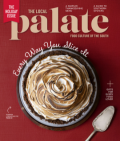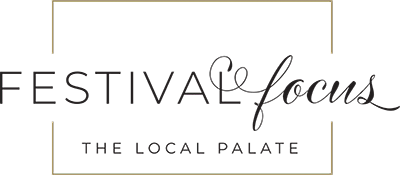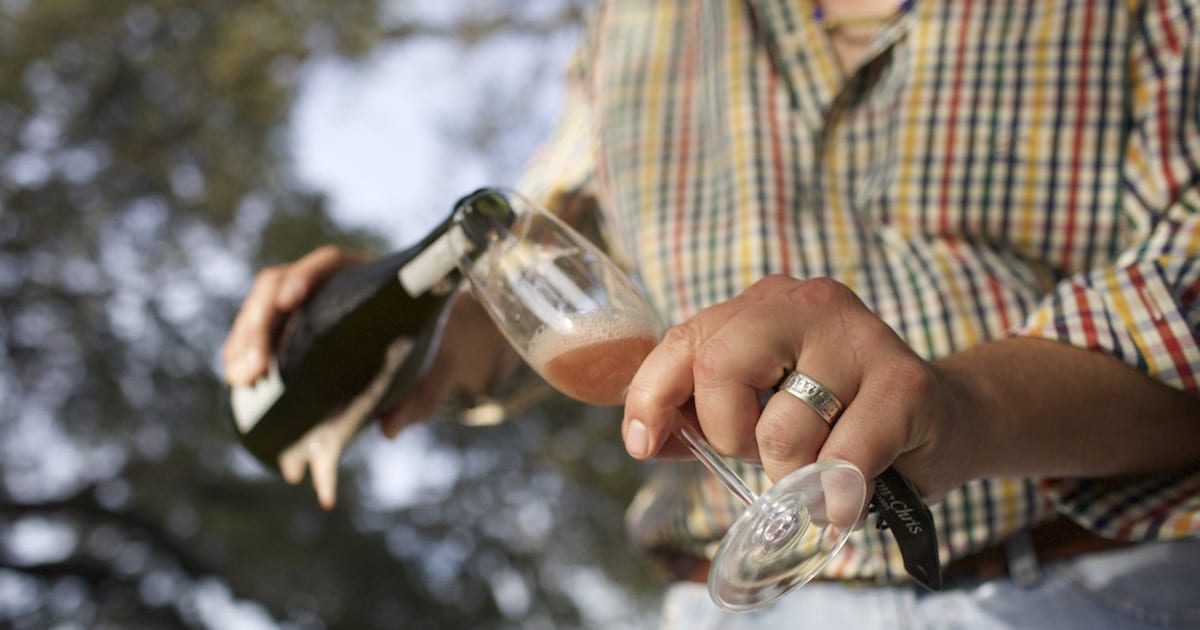A couple of Hill Country winemakers and their families toast the harvest with dinner under the oaks
By the time the sun begins its slow descent behind the vineyards, dinner preparations are well underway. A mess of fresh produce—emerald leaves of young spinach, velvety pods of okra, and carrots—from nearby farms are carried down from the kitchen. Under a canopy of ancient oak trees, a long table is set with colorful wildflowers, candles, and a sea of wine glasses. The aromas of leg of lamb and beef tenderloin sourced from neighboring farms sizzle over a wood fire, keeping Sookie, the winemaker’s Chesapeake Bay retriever, snoozing suspiciously close to the grill. The scene is not unfamiliar—the kind of al fresco affair you might happen upon in Sonoma or the Willamette Valley. But in this corner of Texas, it’s still a bit of an anamoly.
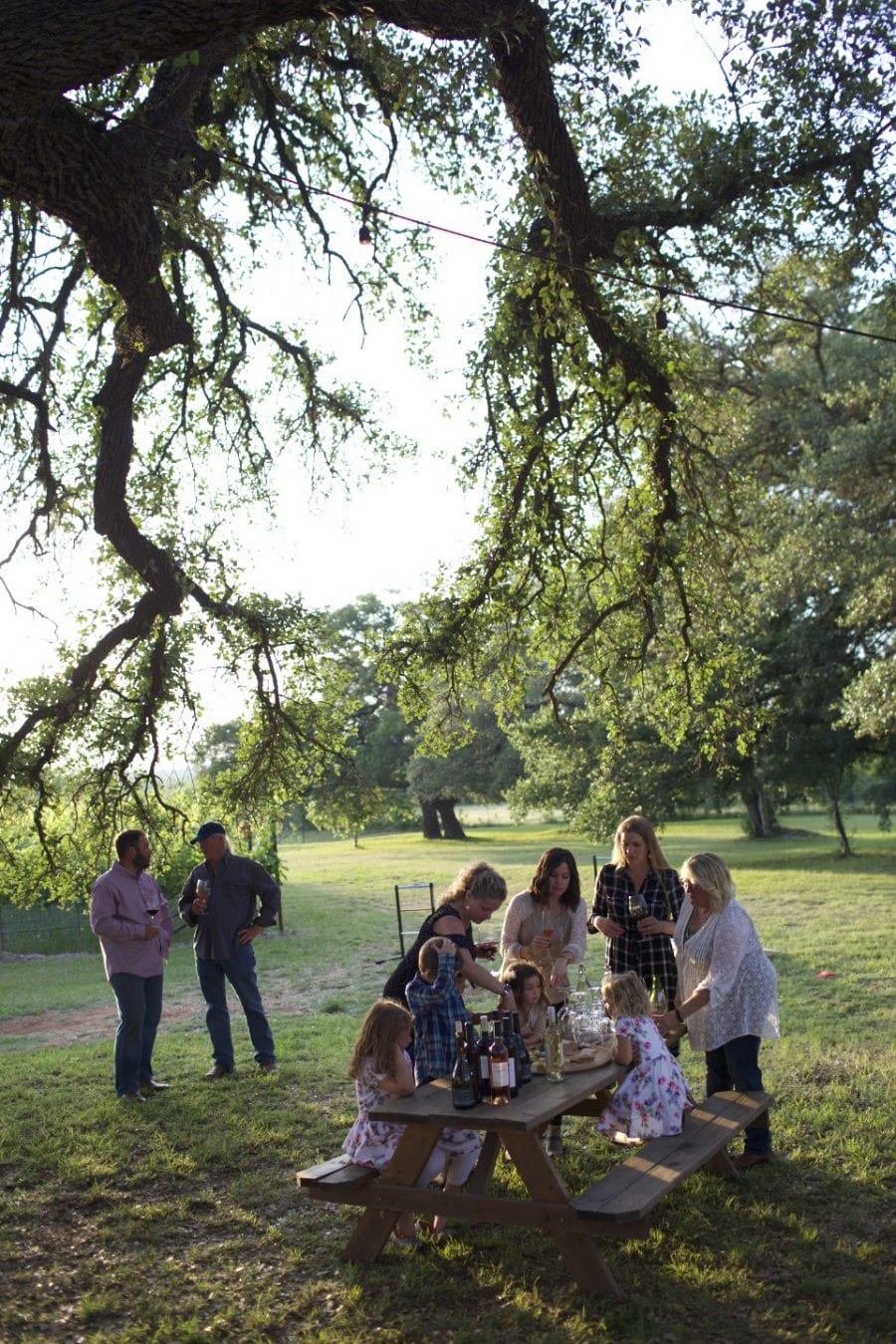
An untimely sneeze might cause you to miss Hye, Texas, a tiny hamlet on Highway 290 between Johnson City and Stonewall. But that would be a shame, particularly if you’re a history buff (Lyndon Johnson, whose boyhood home is nearby, claimed to have mailed his first letter from the Hye post office at the age of 4), or a fan of adult beverages. That’s because over the past decade, the little town has emerged an unlikely bastion of attention-getting wine and spirits.
Just a few miles off the highway, for instance, you can visit Garrison Brothers Bourbon distillery to smell the corn cooking, taste their sweet mash, and sample a nip or two of Dan Garrison’s award winning bourbon whiskey. Or, if you’re looking to while away an afternoon with a cold bottle of dry, petal pink rosé and a cheese plate (and let’s face it, who isn’t?), you can hit the turn signal for William Chris Vineyards, a winery that offers visitors the chance to kick back and taste their wines, and experience the rustic charm of the region’s history.
Housed in a historic farmhouse, the winery’s tasting room looks like an iconic wine country postcard, but ten years ago, you’d be hard pressed to find a wedge of brie in these parts. Back then, “Hye was a junkyard with a rundown post office,” admits Chris Brundrett, one of the founding winemakers at William Chris. “When we decided to open here, everyone said we were crazy, that we were too far from Fredericksburg.”
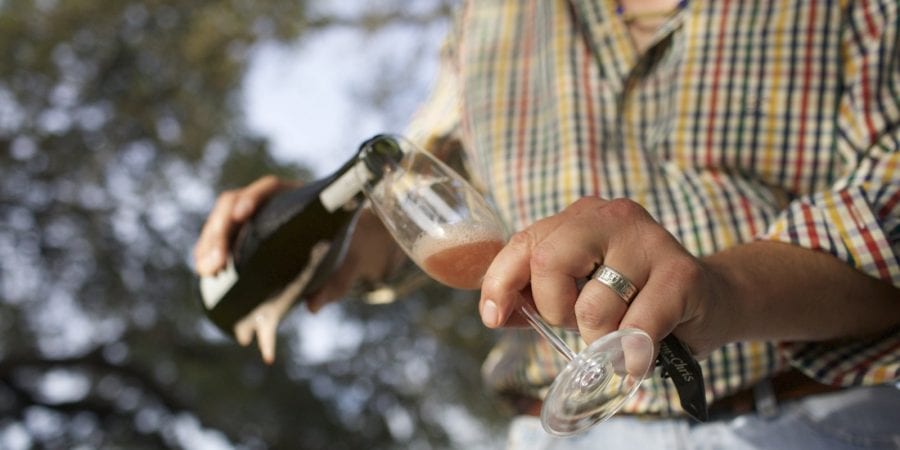
True to Texas
Hye is the kind of town where you know your neighbors or hunt on their ranch, so a supportive community played a role in the growth. When laws prevented Garrison from selling his bourbon on premises, for instance, he convinced friends to open a liquor store on the side of the historic post office. Eventually, the shop was taken over by Jason Cook and evolved into the Hye Market Restaurant and Tasting Room, complete with live music, local craft beers, Texas wines, and locally sourced produce and meats. “Now Jason is part of the movement,” Brundrett, says. “His operation is exposing other winemakers from around the state. We’ve gotten so far away from agrarian farming, now it’s a novelty. For us, Hye was kind of a last-ditch effort, a cornerstone from which to say, ‘hey we’re out here growing something, growing a piece of our world.’”
lackmon was working as a vineyard manager of a respected winery and already an industry veteran with thirty years of Texas winegrowing experience. After graduating from Texas Tech in the late 1970s with degrees in agriculture and economics, he planted and managed several of the state’s first vineyards in both the High Plains, where most Texas grapes are grown, and the Hill Country. Brundrett had recently graduated with a horticulture degree from Texas A&M, and assumed head winemaking responsibilities for several Texas wine labels. Managing properties in the Hill Country and the High Plains, he was establishing a career as one of the state’s fastest rising young winegrowers. “We met and I immediately wanted to know as much about Texas viticulture as Bill did,” Brundrett remembers.
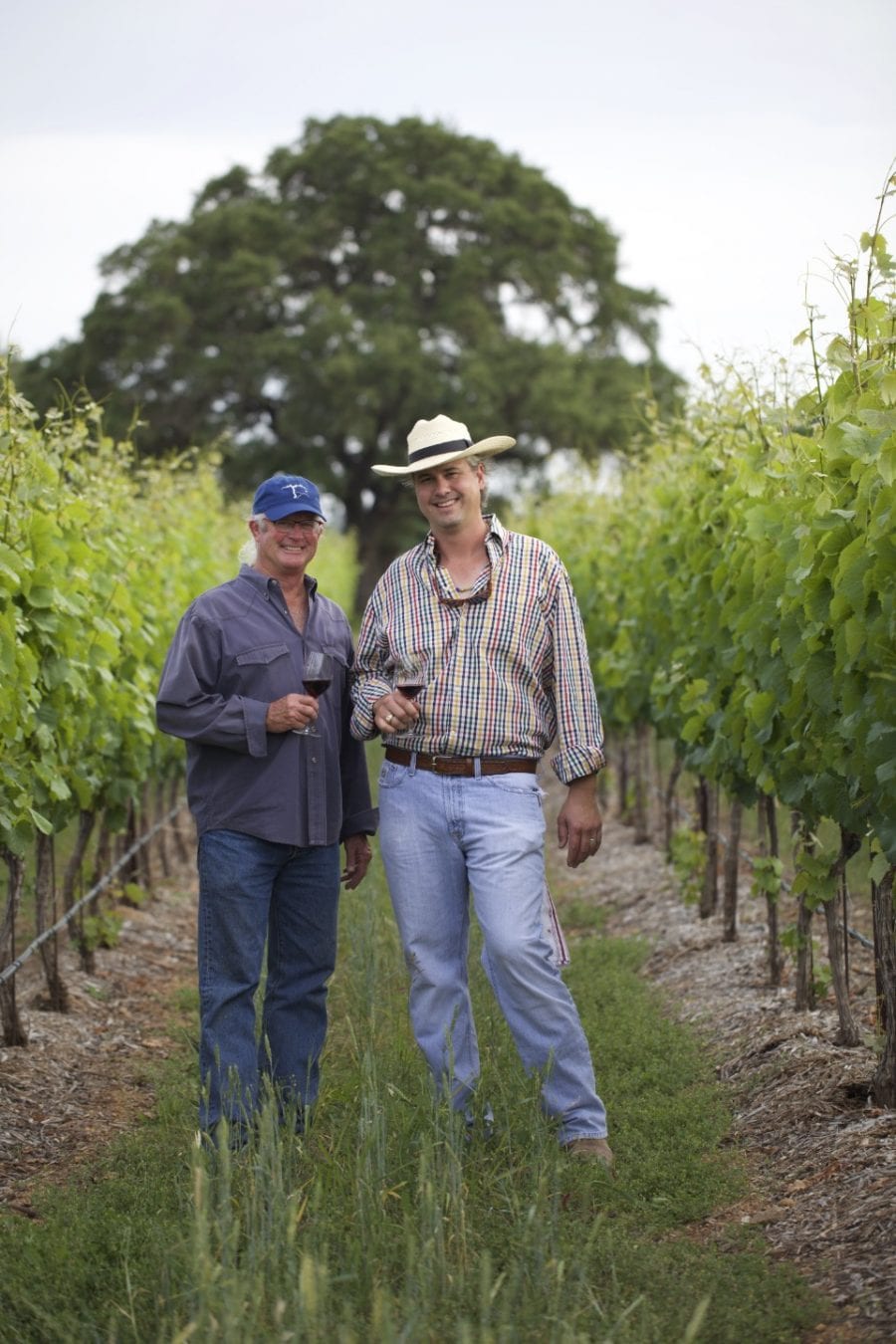
Describing himself a wine “grower” is intentional—one of the most contentious issues in the Texas wine industry is whether Texas wine should be exclusively made with Texas-grown grapes. Because of the state’s challenging climate, some winemakers rely on grapes grown elsewhere, such as California and Washington, for a portion of their production. As fierce and vocal advocates of truth in origin (clearly stating where your grapes are grown), Blackmon and Brundrett are committed to wine made with 100 percent Texas-grown grapes. Eventually this shared philosophy—that great wines are not made, but grown—led to their collaboration. They grow half of their production themselves; the remainder comes from fourteen other Texas families. In 2010, Brundrett and his father, Bruce, planted the Brundrett Family Estate vineyard in San Angelo, which will produce grapes exclusively for William Chris.
ocation to build their winery. A pioneer settlement in the historic town of Hye seemed like the perfect platform for their approach, so they restored the property’s 1905 farmhouse to serve as a tasting room. The winery and tasting facilities opened in 2010 and Hye Estate Vineyard was planted next to the winery in March 2012. With antique windows and a sweeping view of the Perdernales River Valley, the wine tasting bar provides a weathered, welcoming setting to taste their limited-vintage wines. Chances are you’ll share the patio with a few of their wine club members (known as “Hye Society”), who also have access to exclusive experiences, like dinners and parties that span the entire property.
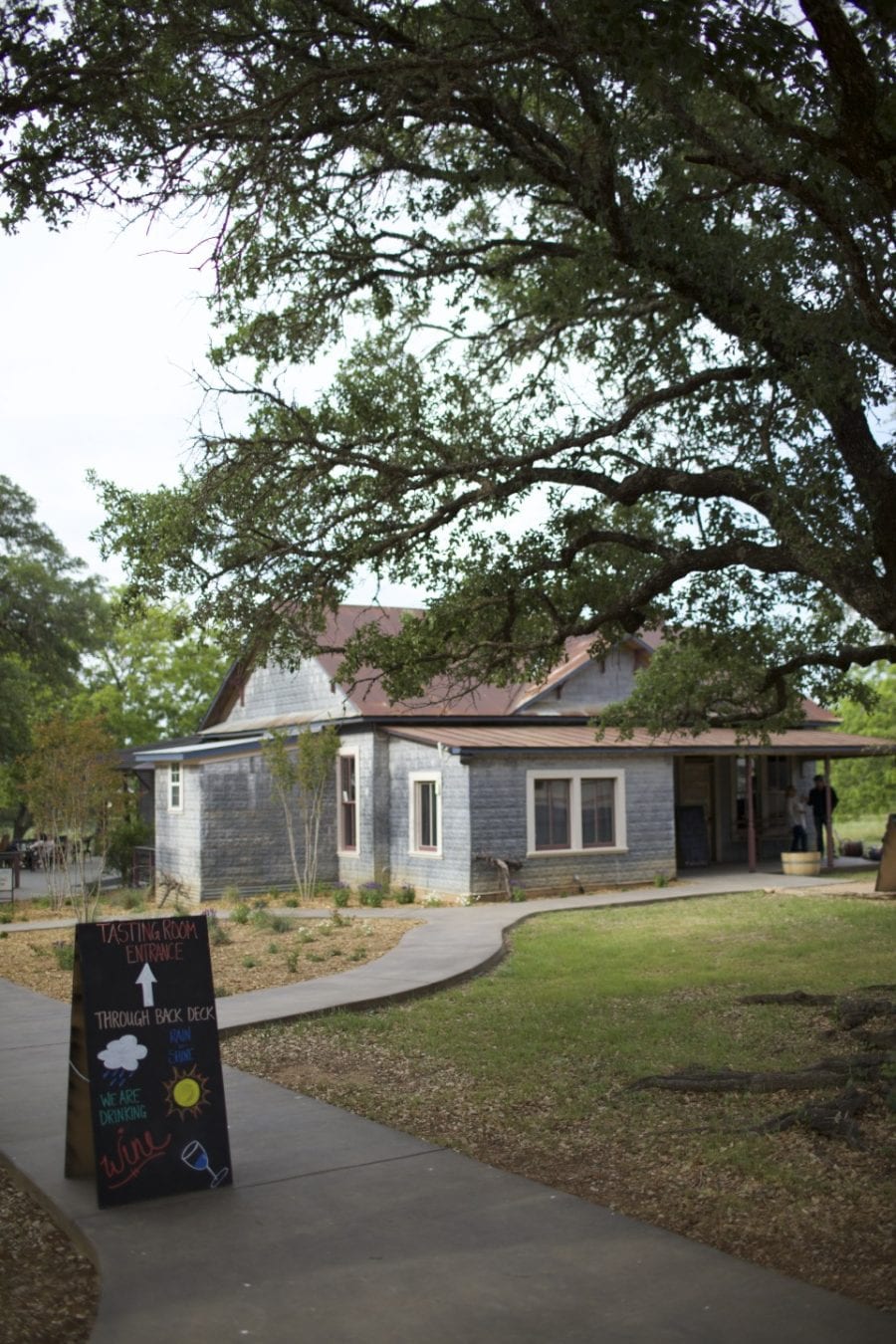
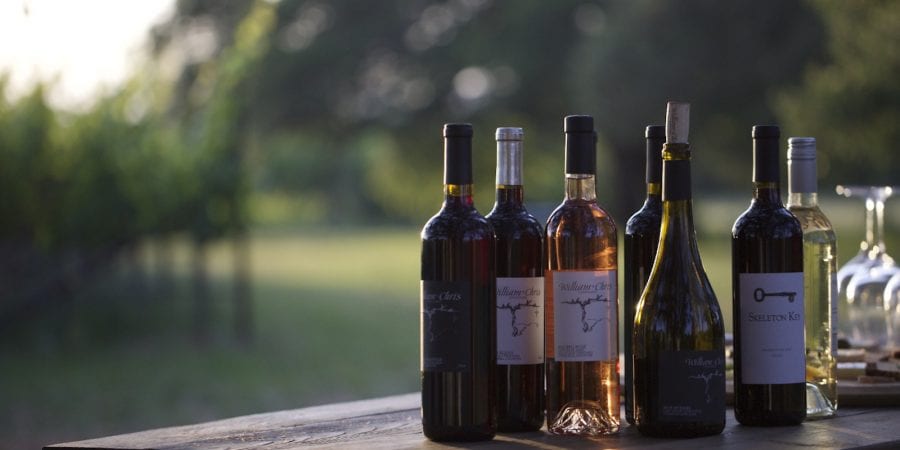
Less is More
In the cellar, the winemakers feel that less intervention is more. That means they rely on the pre-industrial method of open-air fermentation and daily punch-downs by hand whenever possible. After each allotment of wine has been barreled, they practice minimal handling, allowing many varietals to take on increasing complexity and depth for years to come.
In the last few years, William Chris has earned acclaim for their Texas Mourvèdre, Malbec Lost Draw, and High Plains Rosé, among other varietals. “The Hill Country terroir is so incredible and diverse,” Brundrett says. “We have decomposed granite and limestone, and these are incredibly significant to the flavor profile of our wines.” In the next decade, he predicts there will be changes in Texas AVA’s (American Viticulture Areas, or designated wine grape-growing regions), with more subregions emerging.
More and more, Texas is becoming known for compelling blends. “Our volatile climate provides vastly different vintages,” Brundrett says. “Blending is a tool to make the best wine possible, and to show a true reflection of what High Plains and Hill Country varietals taste like.” To achieve that balance, they carefully blend with each varietal’s strengths to create wines that are both balanced and emphasize the flavors that are unique to the vineyards in which they are grown.
An example is their annual “Artist’s Blend,” (with a label chosen from an open call to Texas artists, and selected by their wine club members) a mix of syrah, grenache, mourvèdre, and the untraditional addition of tannat to round out the Rhone-style blend.
“Several years ago, most people didn’t drink Texas wine,” Brundrett says. “Now they have a chance to understand how wine from different areas tastes, which leads to that ‘a-ha’ wine epiphany.”
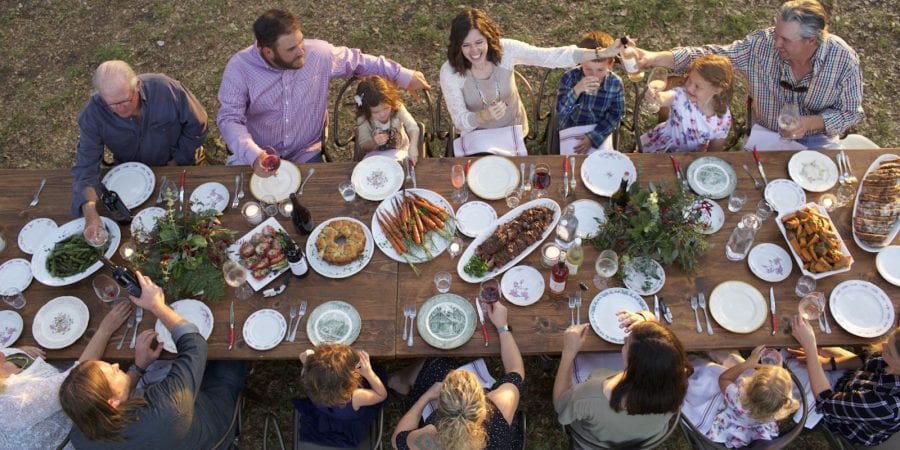
Family Affair
From the get-go, William Chris was a family affair. Blackmon’s sister, Carol, works in guest relations, and Brundrett’s wife, Katherine, manages the office. Bringing employees up through the ranks of their operation is testament to the winemakers’ second shared conviction: that wine should be inspired by the pleasure that comes from an extended community. So, it’s only fitting that each fall, the literal fruits of their labor are celebrated around a table of friends and the family. “During harvest our wives and kids don’t get to see us much,” Brundrett says. “It’s amazing to be able to have a dinner to say ‘thank you’ and let them know we understand the sacrifice that’s made.”
The feast, like the business of winemaking, is a team effort. Wearing a wide-brimmed straw hat and sunglasses, Brundrett flips hefty burgers while production winemaker Joshua Fritsche chars carrots, okra, and scallions on the hot grates. Left to their own devices, young kids in their Sunday best make quick work of a board of local cheeses and charcuterie. At twilight, when vines become a dark silhouette against a streaky evening sky, Chris pops a bottle of a pét-nat rosé, a striking pink, naturally fermented sparkling wine brimming with the flavor of satsumas and fresh rose petals—and calls everyone to the table for a toast and prayer of gratitude. The meal is long and languid, complete with several shades of wine and the easy laughter that comes from shared struggles and the company of old friends.
This story was originally published in the October 2017 Issue.
share
trending content
-
Bluebird Spin on the Champagne Cocktail
by Tate Jacaruso -
ShellBound: An Anthology of Southern Oyster Culture | Episode 1: Virginia
by TLP Editors -
A Hanukkah Tradition with Butcher & Bee
by Erin Byers Murray -
A First Look at Murray’s Creole Pub
by Erin Byers Murray -
What To Give the Friend Who Loves Charleston
More From Roots
-
How Nicola Blaque Is Redefining Jerk Chicken in the South
-
Infusion of Spirit with Alba Huerta | Listen
-
Meet a Local: Tank Jackson | Listen
-
Of Rice and Flavor with Nicole Cabrera Mills | Listen
-
ChòpnBlọk: A Journey to Connection
